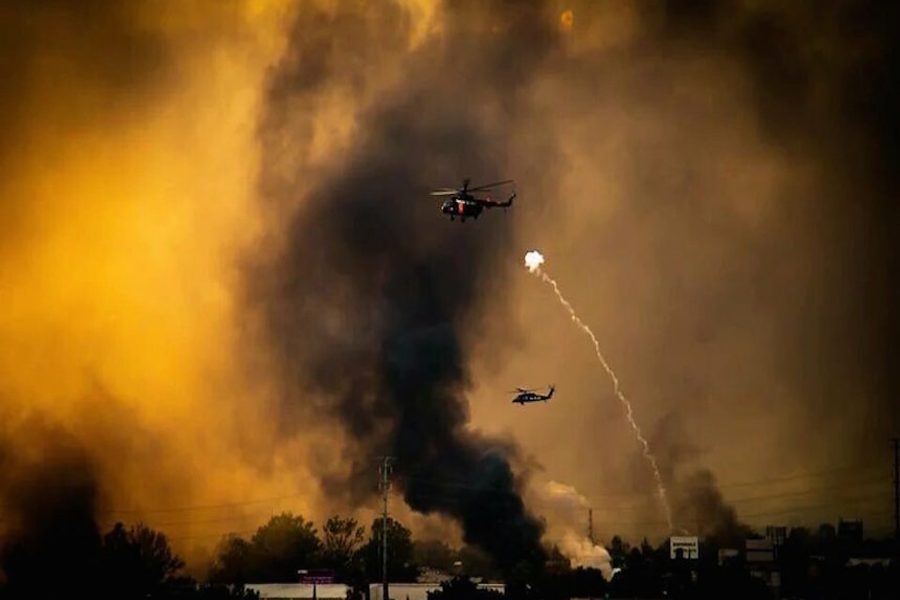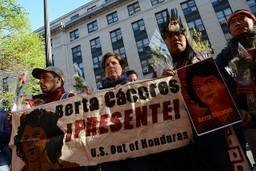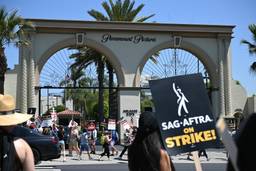After Teachers Union Protests Against Education Reform, Mexican Police Kill 8 Protesters in Oaxaca
Parker Asmann

Rising tensions between the Mexican government and the National Coordination of Education Workers (CNTE), the leaders of the independent teachers movement within the National Union of Education Workers (SNTE), culminated Sunday evening in violent clashes that left eight dead and 53 civilians and 55 police officers injured in Oaxaca state, according to reports.
Teachers from the CNTE are protesting in opposition to a part of Mexico’s education reform that calls for the mandatory testing of teachers, in addition to the arrests of union leaders on money laundering and other charges that protesters feel are unsubstantiated. According to reports, protesters armed with molotov cocktails and rocks clashed with armed federal and state police officers across several municipalities in Oaxaca state, primarily in Nochixtlán where the violence escalated about 50 miles northwest of Oaxaca’s historic center.
In 2013 Enrique Peña Nieto’s administration adopted an Education Reform Bill. Among other things, the bill created an independent body called the Instituto Nacional para la Evaluación de la Educación (National Institute for the Evaluation of Education) to evaluate teachers.
The reform created a merit-based pay and promotion system, new tests for teachers entering the field (tests that teachers say take power away from “normals,” Mexico’s local teacher schools that have often provided a path to upward mobility for young teachers from poor families and have often been the site of political radicalization, as David Bacon explains) and more federal oversight. The bill shifted control from Mexico’s teachers union, National Union of Education Workers (SNTE), to the federal government and caused an uproar within the CNTE.
Since then, teachers have organized and led protests across the southern Mexican states of Oaxaca, Guerrero and Michoacán in opposition to the reforms. In response, the government has initiated several efforts to thwart the protests. In May, Education Secretary Aurelio Nuño Mayer announced the firing of 3,000 teachers in Oaxaca, Guerrero and Michoacán after they had not worked for three days. A month later, they started to target union leaders.
In 2010 Oaxaca’s state teacher’s union, Section 22, proposed their own set of education reforms that focused on recognizing indigenous cultures and forming alliances between teachers and their communities. On June 11 and 12 of this year, Ruben Nuñez and Francisco Villalobos, the union’s secretary general and secretary of organization, respectively, were detained by federal agents under allegations of money laundering and other charges, according to reports. Their detentions further ignited the frustration of the CNTE against neoliberal education reforms backed by the ruling Institutional Revolutionary Party (PRI).
Video of the clashes shows CNTE supporters and federal and state agents divided by blockades of burning vehicles as thick, black smoke billows into the air. Despite statements from Mexico’s federal government claiming that agents that had participated in the operation were not carrying guns and were ambushed by protesters, several shots can be heard on more than one occasion as protesters appear to stand hundreds of feet away.
In a series of photos published by Reforma Nacional on Twitter, at least one agent appears to be aiming an automatic weapon towards the crowd of protesters. Another photo published by Mexican reporter Diego Enrique Osorno shows an agent standing watch as at least a dozen detained protesters lie face down in the back of a pickup truck with their hands wrapped around their heads. Eye witness accounts of the clashes appear to contradict the official statement released by the government.
What’s more, reports have surfaced from the Mexican outlet Sin Embargo claiming that local hospitals in Nochixtlán have been closed to the public and are only being used to treat wounded police officers. Many local reporters have also claimed to be directly targeted by police for taking video and shooting photographs of the clashes. According to the Mexican National Commission of Human Rights, local reporter Elpidio Ramos Zárate of the newspaper El Sur del Itsmo was among the eight killed thus far.
Oaxaca has long been a focal point for opposition against the ruling PRI. In 2006 Oaxaca’s teacher’s union held their annual strike to negotiate contracts for the following year. Only this time the strikes also demanded the ousting of then governor Ulises Ruiz Ortiz. In response, police opened fire on the nonviolent protesters, sparking a conflict that lasted seven months and left more than a dozen dead. Multiple human rights groups generated reports that suggest the Mexican government may have used death squads and summary executions.
The National Human Rights Commission (CNDH) has announced that they will be opening an investigation into the violence, according to the Mexican publication Proceso. The group explained that they will gather all the necessary information to determine who was responsible for the eight deaths and more than 100 wounded.
With tensions expected to continue to rise after the violent clash between protesters and police, the investigation by the CNDH will be critical as more citizens continue to organize and protest around the country in support of their teachers.

I hope you found this article important. Before you leave, I want to ask you to consider supporting our work with a donation. In These Times needs readers like you to help sustain our mission. We don’t depend on—or want—corporate advertising or deep-pocketed billionaires to fund our journalism. We’re supported by you, the reader, so we can focus on covering the issues that matter most to the progressive movement without fear or compromise.
Our work isn’t hidden behind a paywall because of people like you who support our journalism. We want to keep it that way. If you value the work we do and the movements we cover, please consider donating to In These Times.






